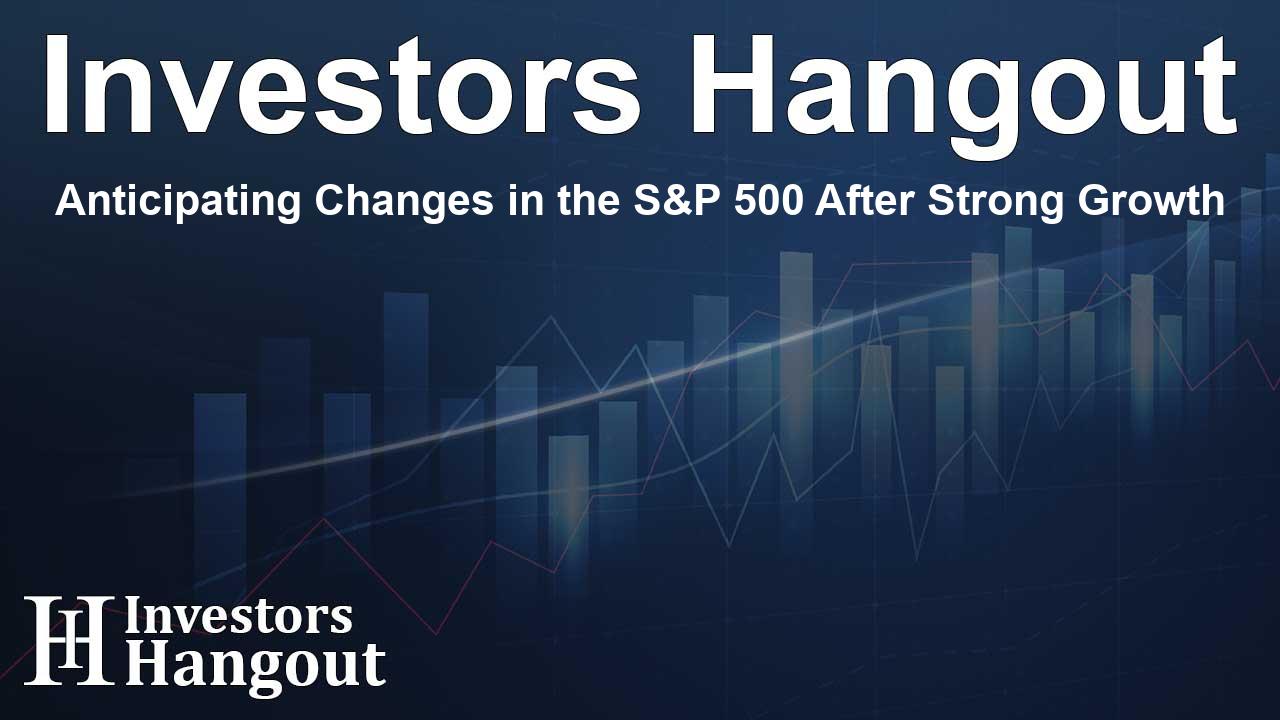Anticipating Changes in the S&P 500 After Strong Growth

Understanding the Future of the S&P 500
The S&P 500 index is expected to experience moderation following two consecutive years of impressive growth, as highlighted by analysts from Oppenheimer. This change is not unexpected when considering historical trends that emerge after striking market rallies. Investing in the stock market entails understanding these cyclical patterns, especially in a dynamic business environment.
Analyzing Historical Performance Trends
Over the past two years, the S&P 500 has witnessed remarkable strength with gains that have surpassed historical averages. This trend, while encouraging, raises important considerations regarding sustainability. Oppenheimer's analysis suggests that such sustained advancements frequently lead to periods where market momentum tends to taper off. This observation is crucial for investors evaluating their strategies.
The Impact of Cumulative Returns
Statistical data supports the notion that after achieving a cumulative return of 40% or greater over two years, the index often sees a subsequent year characterized by subdued performance, averaging merely 3.7%. It's intriguing to note that positive results are observed in only about half of these instances, which underscores the unpredictable nature of market returns post-bull markets.
The Current Market Position
Currently, the S&P 500 is approximately 27 months into a bull market that started in October 2022. This timeframe is crucial as it approaches the median duration of 32 months recorded since 1932 in similar market conditions. While this does not indicate an imminent downturn, it suggests that the S&P might be transitioning into a phase of stabilization rather than continued vigorous growth.
Evaluating Future Projections
Additional studies regarding market performance support Oppenheimer’s expectations. Breakouts to all-time highs often appear to lose their capacity to drive substantial gains in subsequent years; recent data indicates that returns in the 12 to 24 months after such breakouts typically average between just 1-2%, contrasting sharply with the historical average of 9-10%. This projection reveals the complexities of post-volatility periods.
Next Year’s Outlook for the S&P 500
Oppenheimer's outlook for the S&P 500 indicates a balanced approach, projecting an overall return of 6% with a target index level of 6,400. This sits between a bullish target of 6,700 and a bearish projection of 6,000, representing a cautious yet optimistic sentiment regarding future growth. This reflects an equilibrium between acknowledging existing upward momentum while being mindful of potential moderation.
The Importance of Caution
Despite the market exhibiting strong internal breadth and lacking significant warning signals, the firm advises maintaining a prudent strategy. They expect the upcoming year will feature corrections and consolidations rather than severe declines, aligning with previous patterns of drawdowns during productive years. Historically, positive years tend to showcase peak-to-trough declines of approximately 11% over a span of nine weeks, suggesting a more controlled evolution of the market rather than a drastic shift.
Frequently Asked Questions
What drives the anticipated moderation of the S&P 500?
Analysts suggest that historical trends post-strong market rallies indicate a potential slowdown following significant growth periods.
Why are two consecutive years of growth significant?
Two remarkable years often lead to a phase of reduced momentum, as seen in historical performance patterns.
What does the current bull market status imply?
The S&P 500 is nearing a typical median duration of bull markets, which may signal stabilization rather than robust growth.
How does volatility affect the S&P 500's performance?
Breakouts to all-time highs often result in decreased returns in the following year, suggesting volatility can affect market expectations.
What should investors consider going forward?
Caution is advised, as the coming year may involve corrections and consolidations instead of dramatic declines, based on historical data.
About The Author
Contact Lucas Young privately here. Or send an email with ATTN: Lucas Young as the subject to contact@investorshangout.com.
About Investors Hangout
Investors Hangout is a leading online stock forum for financial discussion and learning, offering a wide range of free tools and resources. It draws in traders of all levels, who exchange market knowledge, investigate trading tactics, and keep an eye on industry developments in real time. Featuring financial articles, stock message boards, quotes, charts, company profiles, and live news updates. Through cooperative learning and a wealth of informational resources, it helps users from novices creating their first portfolios to experts honing their techniques. Join Investors Hangout today: https://investorshangout.com/
The content of this article is based on factual, publicly available information and does not represent legal, financial, or investment advice. Investors Hangout does not offer financial advice, and the author is not a licensed financial advisor. Consult a qualified advisor before making any financial or investment decisions based on this article. This article should not be considered advice to purchase, sell, or hold any securities or other investments. If any of the material provided here is inaccurate, please contact us for corrections.
